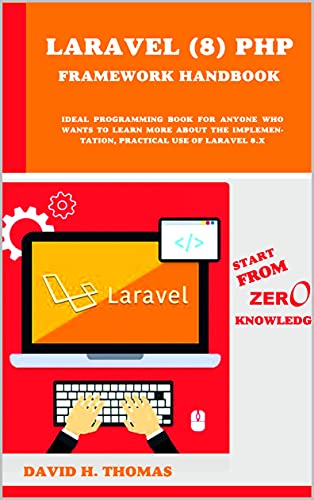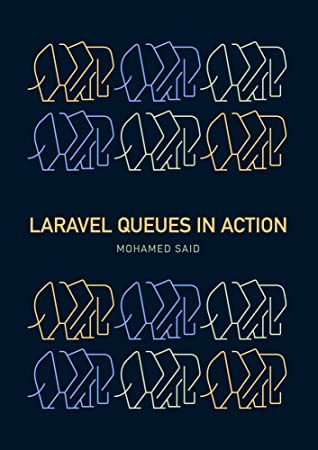Download this PDF book: A Microscale Approach to Organic Laboratory Techniques (Cengage Learning Laboratory Series for Organic Chemistry) 6th Edition by Donald L. Pavia, George S. Kriz, Gary M. Lampman, Randall G. Engel
Taking an organic chemistry laboratory course? You need a laboratory textbook you can trust! This proven book gives you what you need to conduct a variety of interesting microscale experiments with safety and ease -- while you develop an understanding of the special techniques these types of experiments require.
This textbook is divided into two major sections. The first section, which includes Part One through Part Five, contains all of the experiments in this book.
The second major section includes only Part Six, which contains all of the important techniques you will use in performing the experiments in this book. Interspersed among the experiments in Part One through Part Three is a series of essays.
The essays provide a context for many of the experiments and often relate the experiment to real world applications.
When your instructor assigns an experiment, he or she will often assign an essay and/or several techniques chapters along with the experiment. Before you come to lab, you should read all of these. In addition, it is likely that you will need to prepare some sections in your laboratory notebook before you come to the lab.
This textbook discusses the important laboratory techniques of organic chemistry and illustrates many important reactions and concepts. In the traditional approach to teaching this subject, the quantities of chemicals used were on the order of 5–100 grams, and glassware was designed to contain up to 500mL of liquid.
This scale of experiment we might call a macroscale experiment. The approach used here, a microscale approach, differs from the traditional laboratory course in that nearly all the experiments use small amounts of chemicals.
Quantities of chemicals used range from about 50 to 1000 milligrams (0.050–1.000 g), and glassware is designed to contain less than 25mL of liquid. The advantages include improved safety in the laboratory, reduced risk of fire and explosion, and reduced exposure to hazardous vapors.
This approach decreases the need for hazardous waste disposal, leading to reduced contamination of the environment. You will learn to work with the same level of care and neatness that has previously been concerned to courses in analytical chemistry.
CONTENTS
Part 1: Introduction to Basic Laboratory Techniques
Part 2: Introduction to Molecular Modeling
Part 3: Properties and Reactions of Organic Compounds
Part 4: Identification of Organic Substances
Part 5: Project-Based Experiments
Part 6: The Techniques
About the Author
Donald L. Pavia earned his BS degree in chemistry from Reed College and his PhD in organic chemistry from Yale University.
In 1970, he joined the faculty at Western Washington University as Assistant Professor and now holds the rank of Professor Emeritus. He is the coauthor of two organic laboratory books that include techniques and experiments:
INTRODUCTION TO ORGANIC LABORATORY TECHNIQUES: A MICROSCALE APPROACH (Cengage Learning), and A SMALL SCALE APPROACH TO ORGANIC LABORATORY TECHNIQUES (Cengage Learning), as well as MICROSCALE AND MACROSCALE TECHNIQUES IN THE ORGANIC LABORATORY (Cengage Learning), which highlights techniques to be used with a faculty member's own experiments.
He is a co-author, with Gary M. Lampman, George S. Kriz and James R. Vyvyan of an organic spectroscopy book, INTRODUCTION TO SPECTROSCOPY (Cengage Learning).
Professor Pavia's research interests center on the synthesis and reactions of valence tautomeric and photochromic compounds, especially pyrylium-3-oxide tautomers. Autoxidations are a special interest. His other interests include the use of computers in teaching organic chemistry, both for lecture presentation and for the simulation of laboratories.
He is the author of several computer programs. One such program is SQUALOR (Simulated Qualitative Organic Analysis) for which he won the 1986 EDUCOM/NCRIPTAL award. The program is designed for teaching the methods for solving organic unknowns. George S. Kriz is Professor of Chemistry at Western Washington University. He earned his B.S. degree in chemistry from the University of California, and his Ph.D. from Indiana University, Bloomington, IN. In 1967 he joined the faculty at Western Washington University and recently served as department chair.
He served as the General Chair of the 17th Biennial Conference on Chemical Education for 2001-2002. Professor Kriz was honored with the Peter J. Elich Excellence in Teaching Award (College of Arts and Sciences), Western Washington University, in 2000 and the Distinguised Service Award from the Division of Chemical Education, American Chemical Society (2010).
He is the co-author with Donald Pavia, Gary Lampman, and Randall Engel of two organic laboratory books that include both techniques and experiments: INTRODUCTION TO ORGANIC LABORATORY TECHNIQUES: A MICROSCALE APPROACH (Cengage Learning), and A SMALL SCALE APPROACH TO ORGANIC LABORATORY TECHNIQUES (Cengage Learning). Their book, MICROSCALE AND MACROSCALE TECHNIQUES IN THE ORGANIC LABORATORY (Cengage Learning), includes techniques only, and can be used with a faculty member's own experiments.
He is a co-author, with Donald Pavia, Gary Lampman, and James Vyvyan, of an organic spectroscopy book, INTRODUCTION TO SPECTROSCOPY (Cengage Learning). Professor Kriz's research interests include: developing new experiments for the organic chemistry laboratory; chemical education and the teaching of chemistry courses for general-understanding audiences; and determination of the structures of natural products using spectroscopic methods.
Gary M. Lampman earned his BS degree in chemistry from the University of California, Los Angeles, and his PhD in organic chemistry from the University of Washington. In 1964, he joined the faculty at Western Washington University as Assistant Professor, rising to Professor in 1973. He received the Outstanding Teaching Award for the College of Arts and Sciences in 1976. He now holds the title of Professor Emeritus.
Teaching has always been an important part of his life. Contact with students invigorates him. He is the coauthor of two organic laboratory books that include techniques and experiments: INTRODUCTION TO ORGANIC LABORATORY TECHNIQUES: A MICROSCALE APPROACH (Cengage Learning), and A SMALL SCALE ARPPROACH TO ORGANIC LABORATORY TECHNIQUES (Cengage Learning), as well as MICROSCALE AND MACROSCALE TECHNIQUES IN THE ORGANIC LABORATORY (Cengage Learning), which highlights techniques to be used with a faculty member's own experiments.
He is a co-author, with Donald L. Pavia, George S. Kriz, and James R. Vyvyan of an organic spectroscopy book, INTRODUCTION TO SPECTROSCOPY, Fourth Edition (Cengage Learning). Professor Lampman also is the author of the computer program for teaching organic nomenclature: ORGANIC NOMENCLATURE: AN INTRODUCTION TO THE IUPAC SYSTEM. His research interests center on synthetic methods involving the reaction of free radicals on unsaturated cobaloximes (vitamin B12 model compounds), synthesis of strained small ring compounds, and chemical education.
He is the author of 18 papers in these areas. He is a member of the American Chemical Society (Organic and Chemical Education divisions), and the Washington College Chemistry Teachers Association. Randall G. Engel has taught chemistry for almost 35 years. He has co-authored with Donald Pavia, Gary Lampman, and George Kriz INTRODUCTION TO ORGANIC LABORATORY TECHNIQUES: A MICROSCALE APPROACH (Cengage Learning), and A SMALL SCALE INTRODUCTION TO ORGANIC LABORATORY TECHNIQUES (Cengage Learning). Their book, MICROSCALE AND MACROSCALE TECHNIQUES IN THE ORGANIC LABORATORY (Cengage Learning), includes techniques only, and can be used with a faculty member's own experiments.
Engel received his B.A. degree in chemistry from Cornell College and his M.S. degree in chemistry from Western Washington University. He began his teaching career at Wenatchee Valley College in 1975 and continued at Green River Community College and Edmonds Community College. Presently he teaches organic chemistry on a part-time basis at North Seattle Community College.
About the book:
Publisher : Cengage Learning; 6th edition (January 1, 2017)
Language : English
Pages: 1054
File: PDF, 36MB
Free Download the Book: A Microscale Approach to Organic Laboratory Techniques (Cengage Learning Laboratory Series for Organic Chemistry) 6th Edition by Donald L. Pavia, George S. Kriz, Gary M. Lampman, Randall G. Engel
PS: Share the link with your friends
If the Download link is not working, kindly drop a comment below, so we'll update the download link for you.
Happy downloading!








